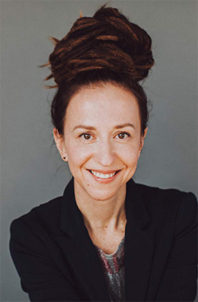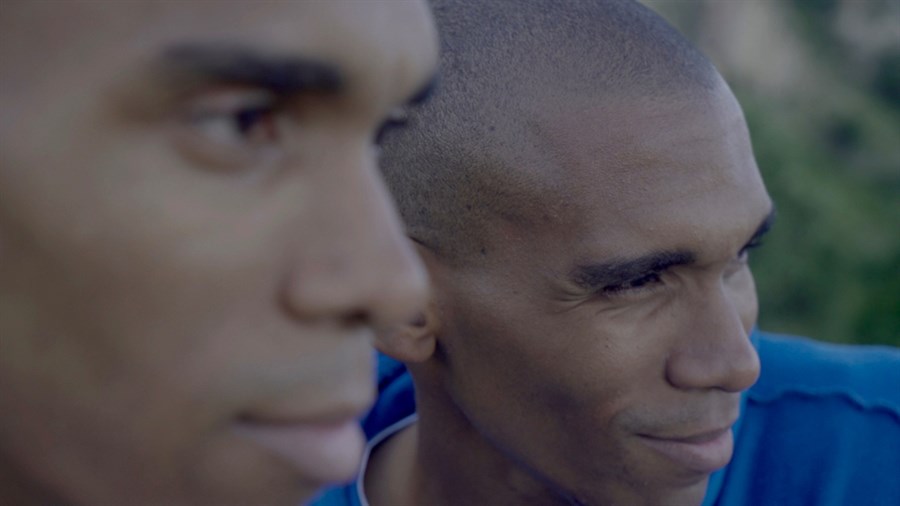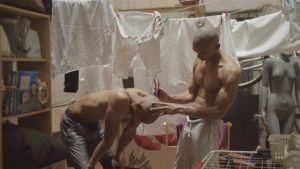
After working almost exclusively in one artistic style, it can be a daunting task to attempt to work in an entirely different direction. For Ingrid Veninger, this was precisely the challenge that drew her to making her seventh (and first documentary) feature, The World or Nothing.
Set to premiere this year at Hot Docs, The World or Nothing, depicts the acclimatization of twin Cuban brothers Rubert and Rubildo Donatien Dinza to their newfound surroundings of Barcelona where they hope to become a famous dance duo. We got the chance to sit down with Ingrid in advance of the film’s premiere to discuss her foray into documentary filmmaking, working with the charismatic brothers, and some of her thoughts on representation initiatives.
Thomas Wishloff: Let’s start with a bit of an obvious question. The World or Nothingmarks a foray into documentary cinema for you. What has been the challenge in moving from a fictionalized form to a non-fiction one? What has been rewarding about the experience?
Ingrid Veninger: I had never worked without a script. My previous features have been rooted in a certain raw, real world lo-fi aesthetic, but I always started a film with a script. Here, I am trying to tell their story as authentically as possible. No outline, not even a theme. I wanted to put the audience in the position of being in Spain with these twins at a very specific point in their lives; when they’ve just moved to Barcelona. Documentary has an immediacy of the here and now and I wanted to capture that spontaneity.

TW: How Did You Meet the Brothers?
IV: I first saw them in 2015 on New Year’s Eve when I travelled to Cuba with my partner, John. It was right before the pre-production of my 6thfeature, Porcupine Lake, which I was determined to shoot in the summer of 2016. The twins were dancing on stage, and they stole the show. I wanted to meet them, but I didn’t approach them, and the next day I didn’t see them. So, I thought that was that. In the beginning of 2017, when I applied to do the Masters program at York University, I had to make a thesis proposal with my application. The first thing I thought of was the twins. Essentially, I proposed a film with the twins even though I had never met them. I dreamed up a short film idea with the brothers, or they could be part of a triptych with different artists – dancers, musicians, visual artists. On New Years Eve 2017, I went back to Cuba with only one goal: to sit down with the twins face to face – meet them – and see if there was some kind of connection. Well… They were no longer dancing at the resort and after a few days of research, I finally got in touch with them via email, and learned that they were on the other side of the island – in Havana. It was a 12-hour drive from where we were; John and I made the trip. No expectations, nothing guaranteed; I was just going on a feeling. In Havana, John and I met with the twins for two hours, and at the very end… I asked the twins if they could be interested in being part of a documentary. It would be about them, their relationship, their life, and dance. They were interested and I committed to return to Cuba in May of 2018 to make a film. Myself, a cameraperson, my partner, John, would record sound; very small. Then they moved to Spain and we easily shifted to shoot in Barcelona. A whole chain of causes and effects made this film happen – the MFA program at York University being a significant part of it all; encouraging me to make a film utilizing a different process. As a filmmaker, I am always trying to reset, recharge and challenge myself in different ways; that’s exciting.
TW: Are you still in touch with the brothers?
IV: I’m still in touch with the brothers, absolutely.
TW: Have they seen the film?
IV: This was a very participatory documentary. The twins saw an early rough cut; they were the first to view any version of the film. Colleagues told me it might not be a great idea to show a work-in-progress to the lead subjects, because it was so raw and still very changeable. For example, if they loved something I would’ve been hesitant to cut it, if they didn’t like something I might have cut it prematurely. The film was about them. My priority was that they felt it was representative, true, honest. Ultimately, I wanted them to be happy with the film. So, this is a participant documentary involving collaboration, transparency and communication.
TW: I noticed that this film is very kinetic. Describe the process of shooting subjects who are always in motion.
IV: I knew I didn’t want to reconstruct this film in post-production; I wanted this to be mostly made in-camera so to speak. I was really inspired by camera flow in Eduardo Williams’ The Human Surge. I wanted to let the real life sequences play out in real time. The way the brothers move around each other is almost like a single organism. I wanted the camera to be like a dance partner, moving very fluidly along with them. Some friends who viewed different edits sometimes wonder how much we choreographer… How much was spontaneous?… I’m comfortable with that sense of ambiguity. Social media, which is a featured element of the film, holds a similar kind of ambiguity with regards to authenticity. I wanted the aesthetic to mirror the questions and uncertainties involved in our relationship with social media. How much is real, how much is fake? It can look spontaneous and authentic, but is it?

TW: What do you think the film says about chasing your dreams?
IV: The twins turn their challenges and obstacles into opportunities. They’ve sacrificed a lot. They work incredibly hard. In the face of so much that’s wrong in the world right now, they embody a kind of positivity, which is represented in the love that they have for each other. Recently, on Facebook, they posted, “we’re keeping the faith for those who have lost it”. That speaks to dreams, and goal, and desires. All of those things come with a price, and it’s certainly not effortless for them or anybody to remain optimistic, but they are committed. Fiercely committed.
TW: As a female filmmaker can you speak to some of the initiatives taken by festivals like Hot Docs to include more films by female directors?
IV: Prioritizing gender equity is important, and we can’t back off that effort, because it can slide in the dark ages very easily. Opportunities and platforms which attract press (Canadian and International) and connect our films to larger audiences with a keen eye to marketing and generating revenue is vital. It’s also vital to represent different voices. We’re seeing festivals pay more attention to gender parity and I was happy to learn that this years Hot Docs’ line-up of films are 54% — directed by women. In reviewing the Canadian Spectrum Programme at Hot Docs, I was very excited to see films directed by Tasha Hubbard, Rama Rau, Julia Ivanova and so many more awesome female filmmakers. However, there’s still a lot of work to do regarding diversity in our industry-at-large. The efforts to prioritize representation need to be engaged and activated, consistently.
TW: What’s Next For You?
IV: April 27th-29thare busy days with our Hot Docs premiere and the defense of my Masters thesis. After that, I’m not sure… I will celebrate for a while, and then I’m wide open to a new some filmmaking adventures. I would love to some different kinds of collaborations—working on a web series, directing television or someone else’s feature script. I’d love to be part of someone else’s vision for a change and bring my filmmaking skills to the party. At the same time, I’ll be working on my thing, which may be inspired by an unexpected person or place… We’ll see what sparks. If anyone reading this has got an original script or a new project idea, hit me up. I’m open and available.

